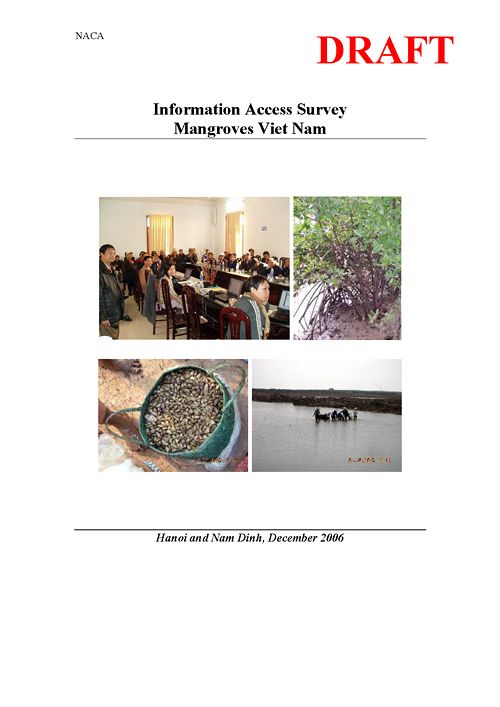Information access survey on mangroves, Viet Nam
28 August 2006 | Nguyen Song Ha and Edward Smith | 1369 Downloads | .pdf | 772.08 KB | Genetics and Biodiversity, Livelihoods, gender and social issues, Aquatic plants, Vietnam
Viet Nam's mangrove forests have been severely impacted by human interventions, with a reduction in national mangrove forestation from 408 thousand ha in 1943 to a low of 150 thousand ha in 2000. A large percentage of these forests have been destroyed through years of warfare, agricultural and aquaculture expansion, timber exploitation, fires, coastal erosion and general human urbanisation. Over 2 thousand km of sea dikes have been constructed in recent decades to protect the expansion of urban development and primary industry along the coastal fringe.
The following study provides an overview of the information needs and communication issues surrounding people living in mangrove regions of Viet Nam. It is hoped that this study will help to raise the awareness of issues surrounding mangrove environments and improve the accessibility to information, for all stakeholders, through quality and targeted communications.
Creative Commons Attribution.

